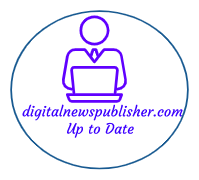Introduction
Pandemics and public health crises have shaped human history, from smallpox and influenza to Ebola and COVID-19. The complexity and speed with which diseases spread in a globalized world demand correspondingly advanced solutions. Artificial intelligence (AI) is now a vital force in public health—helping manage outbreaks, forecast disease spread, optimize interventions, and inform crisis response in real time. This article explores the transformative impact of AI on public health, focusing on pandemic prediction, management, and future readiness.
How AI Powers Pandemic Prediction and Early Warning
Data Integration and Surveillance
- AI systems ingest data from hospitals, laboratories, social media, environmental sensors, and travel records.
- Machine learning models identify early signs of outbreaks by detecting anomalies in symptoms, hospital admissions, or geographic clusters.
- “Syndromic surveillance” uses web search data and pharmacy purchase trends to spot new outbreaks before official diagnoses are widespread.
Real-Time Epidemic Modeling
- AI-driven simulations map how infectious diseases might spread within and between populations.
- Algorithms consider factors like travel patterns, population density, immunity, and healthcare access.
- Models are updated continuously as new data flows in, making forecasts and risk evaluations far more accurate.
AI-Assisted Crisis Management
Optimizing Resource Allocation
- AI helps authorities anticipate which regions will need more medical supplies, healthcare workers, or intensive care beds.
- Automated systems coordinate logistics for vaccines, ventilators, medicines, and protective gear.
Contact Tracing and Containment
- Digital contact tracing apps anonymously log proximity events, allowing rapid notification of exposure and helping to break chains of transmission.
- AI analyzes movement and interaction patterns while respecting privacy regulations.
Communication and Public Engagement
- Chatbots and virtual agents answer public health queries, debunk misinformation, and help triage symptoms at scale.
- Natural language processing summarizes evolving guidance and translates alerts for multilingual populations.
Pandemic Case Studies: AI in Action
1. COVID-19
- BlueDot’s AI platform flagged unusual pneumonia cases in Wuhan days before the World Health Organization’s official announcement.
- Google’s AI forecasted COVID surges, guided policy response, and optimized vaccine deployment.
- Healthcare bots handled millions of patient screenings, enabling symptom assessment outside hospital walls.
2. Influenza and Dengue
- Predictive analytics have improved outbreak forecasting and seasonal planning for these viral diseases, guiding immunization campaigns and early response.
3. Ebola and Zika
- AI models integrated satellite, climate, and travel data to optimize resource placement and predict transmission zones.Learn more HVAC systems Kenya
AI for Prevention and Mitigation
Personalized Risk Assessment
- AI assesses individual risk for severe disease based on age, comorbidities, local transmission rates, and behavior patterns.
- Guidance for vaccination, travel, or medical visits adapts dynamically as circumstances and risk profiles change.
Vaccine R&D and Deployment
- Machine learning accelerates the design of new vaccines by simulating immune responses and mapping viral mutations.
- AI models guide the distribution of vaccines to maximize population-level protection, especially in resource-poor areas.
Challenges and Considerations
Data Privacy and Security
- Robust anonymization, encryption, and consent management must accompany AI health surveillance.
- Clear communication about data usage fosters public trust.Learn more SEO Company in Nairobi, Kenya
Algorithmic Bias and Equity
- AI models can reflect existing inequalities—authorities must validate and recalibrate predictions to avoid underserving marginalized groups.
Integration and Interoperability
- Healthcare systems must enable seamless sharing and use of diverse data sources.
- Real-time updating and model transparency are essential for actionable guidance.
Ethical Oversight
- Decisions about quarantine, treatment prioritization, and policy must be guided by ethical frameworks, ensuring AI does not inadvertently cause harm or inequity.
The Future: AI and Global Public Health Preparedness
Early Detection Networks
- National and international collaborations will deploy AI-powered surveillance for emerging threats, integrating health, travel, environmental, and commercial data.
Dynamic Response Tools
- Real-time dashboards, predictive supply chain tools, and simulation platforms will drive rapid, coordinated decision-making.
Democratization of Access
- AI-driven public health resources will reach under-served regions, bridging gaps in information, care, and crisis readiness.Learn moreSolar Water Pump for Irrigation Kenya
Conclusion
AI is transforming public health and pandemic management by fusing data, speed, and intelligence. The power to forecast outbreaks, optimize interventions, and inform the public can save lives and prevent crises. While ethical vigilance and robust infrastructure remain crucial, the age of AI-driven global wellness is well underway—making humankind better prepared for the challenges of tomorrow.






